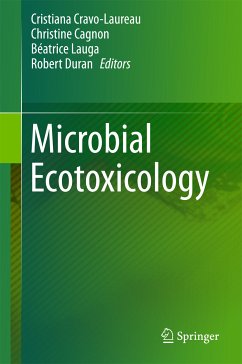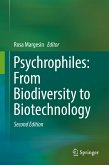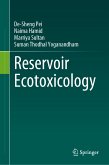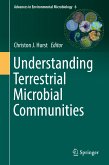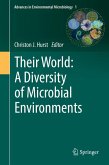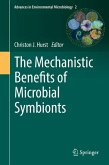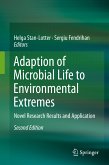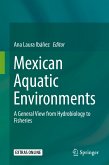Microbial Ecotoxicology (eBook, PDF)
Redaktion: Cravo-Laureau, Cristiana; Duran, Robert; Lauga, Béatrice; Cagnon, Christine
129,95 €
129,95 €
inkl. MwSt.
Sofort per Download lieferbar

65 °P sammeln
129,95 €
Als Download kaufen

129,95 €
inkl. MwSt.
Sofort per Download lieferbar

65 °P sammeln
Jetzt verschenken
Alle Infos zum eBook verschenken
129,95 €
inkl. MwSt.
Sofort per Download lieferbar
Alle Infos zum eBook verschenken

65 °P sammeln
Microbial Ecotoxicology (eBook, PDF)
Redaktion: Cravo-Laureau, Cristiana; Duran, Robert; Lauga, Béatrice; Cagnon, Christine
- Format: PDF
- Merkliste
- Auf die Merkliste
- Bewerten Bewerten
- Teilen
- Produkt teilen
- Produkterinnerung
- Produkterinnerung

Bitte loggen Sie sich zunächst in Ihr Kundenkonto ein oder registrieren Sie sich bei
bücher.de, um das eBook-Abo tolino select nutzen zu können.
Hier können Sie sich einloggen
Hier können Sie sich einloggen
Sie sind bereits eingeloggt. Klicken Sie auf 2. tolino select Abo, um fortzufahren.

Bitte loggen Sie sich zunächst in Ihr Kundenkonto ein oder registrieren Sie sich bei bücher.de, um das eBook-Abo tolino select nutzen zu können.
This book is a treatise on microbial ecotoxicology, discussing the effect of pollutants on microbial ecosystems and the role of microorganisms in ecosystems services. Emphasizing the microbial responses to pollution at different biological levels, it focuses on metabolic pathways, genetic adaptation and response at the whole-microbial community level. It also addresses the ecological indicators of ecosystem recovery, as well as microbial biomarkers and biosensors as tools for microbial ecotoxicology.
- Geräte: PC
- ohne Kopierschutz
- eBook Hilfe
- Größe: 8.56MB
Andere Kunden interessierten sich auch für
![Psychrophiles: From Biodiversity to Biotechnology (eBook, PDF) Psychrophiles: From Biodiversity to Biotechnology (eBook, PDF)]() Psychrophiles: From Biodiversity to Biotechnology (eBook, PDF)161,95 €
Psychrophiles: From Biodiversity to Biotechnology (eBook, PDF)161,95 €![Reservoir Ecotoxicology (eBook, PDF) Reservoir Ecotoxicology (eBook, PDF)]() De-Sheng PeiReservoir Ecotoxicology (eBook, PDF)81,95 €
De-Sheng PeiReservoir Ecotoxicology (eBook, PDF)81,95 €![Understanding Terrestrial Microbial Communities (eBook, PDF) Understanding Terrestrial Microbial Communities (eBook, PDF)]() Understanding Terrestrial Microbial Communities (eBook, PDF)113,95 €
Understanding Terrestrial Microbial Communities (eBook, PDF)113,95 €![Their World: A Diversity of Microbial Environments (eBook, PDF) Their World: A Diversity of Microbial Environments (eBook, PDF)]() Their World: A Diversity of Microbial Environments (eBook, PDF)113,95 €
Their World: A Diversity of Microbial Environments (eBook, PDF)113,95 €![The Mechanistic Benefits of Microbial Symbionts (eBook, PDF) The Mechanistic Benefits of Microbial Symbionts (eBook, PDF)]() The Mechanistic Benefits of Microbial Symbionts (eBook, PDF)113,95 €
The Mechanistic Benefits of Microbial Symbionts (eBook, PDF)113,95 €![Adaption of Microbial Life to Environmental Extremes (eBook, PDF) Adaption of Microbial Life to Environmental Extremes (eBook, PDF)]() Adaption of Microbial Life to Environmental Extremes (eBook, PDF)105,95 €
Adaption of Microbial Life to Environmental Extremes (eBook, PDF)105,95 €![Mexican Aquatic Environments (eBook, PDF) Mexican Aquatic Environments (eBook, PDF)]() Mexican Aquatic Environments (eBook, PDF)73,95 €
Mexican Aquatic Environments (eBook, PDF)73,95 €-
-
-
This book is a treatise on microbial ecotoxicology, discussing the effect of pollutants on microbial ecosystems and the role of microorganisms in ecosystems services. Emphasizing the microbial responses to pollution at different biological levels, it focuses on metabolic pathways, genetic adaptation and response at the whole-microbial community level. It also addresses the ecological indicators of ecosystem recovery, as well as microbial biomarkers and biosensors as tools for microbial ecotoxicology.
Dieser Download kann aus rechtlichen Gründen nur mit Rechnungsadresse in A, B, BG, CY, CZ, D, DK, EW, E, FIN, F, GR, HR, H, IRL, I, LT, L, LR, M, NL, PL, P, R, S, SLO, SK ausgeliefert werden.
Produktdetails
- Produktdetails
- Verlag: Springer International Publishing
- Seitenzahl: 362
- Erscheinungstermin: 1. August 2017
- Englisch
- ISBN-13: 9783319617954
- Artikelnr.: 53062163
- Verlag: Springer International Publishing
- Seitenzahl: 362
- Erscheinungstermin: 1. August 2017
- Englisch
- ISBN-13: 9783319617954
- Artikelnr.: 53062163
- Herstellerkennzeichnung Die Herstellerinformationen sind derzeit nicht verfügbar.
Cristiana Cravo-Laureau is Associate Professor in Environmental Microbiology at Pau University (France). She is member of the Institute for Analytical Sciences and Physico-Chemistry for Environment and Materials (IPREM), a CNRS-UPPA (University of Pau and Pays de l'Adour) joint unit. She earned her Ph.D. in Environmental Science from the Aix-Marseille University (France) in 2003, completed a post-doc at IRD (France) and joined the Pau University in 2004. Her research focuses on microbial ecology and ecotoxicology. She has a special interest in investigating the involvement of microorganisms in biogeochemical cycles and their role in pollutants degradation in marine environments, particularly in coastal sediments. She has expertise in anoxic environments and anaerobic microorganisms, from the community scale to pure strains. In addition to examining natural environments, she develops experimental ecology approaches. Her research also involves the impact of oil pollution on aerobic and anaerobic prokaryotic communities. She has also expanded her research interests to the impact of oxic/anoxic oscillations on microbial communities and organic-pollutants degradation. Robert Duran is Professor in Environmental Molecular Microbiology at Pau University (France). He is member of the Institute for Analytical Sciences and Physico-Chemistry for Environment and Materials (IPREM), a CNRS-UPPA (University of Pau and Pays de l'Adour) joint unit. He received a PhD in Biochemistry, Molecular and Cell Biology from Montpellier University (France) and completed his post-doc at Tokyo University (Japan) before joining Pau University. He has been working in environmental microbiology and molecular microbiology research for 20 years. Prof. Duran has been a member of several scientific board committees and he is presently editor for Environmental Science and Pollution Research (Springer). He has successfully completed more than 20 projects focusing on microbial ecology and diversity, with an emphasis on extreme, polluted, and estuarine and coastal ecosystems. His main research objectives are to understand the impact of pollutants on microbial communities and, in turn, to characterize the role of microorganisms in determining the fate of pollutants. Relevant recent discoveries include the characterization of the taxonomic and functional microbial-diversity in extreme and contaminated ecosystems; the behavior of sulfate reducing bacteria populations in acid mine drainage and microbial mats according to the fluctuation of environmental parameters; the diversity of ring hydroxylating dioxygenases in polluted microbial mats and the organization of hydrocarbon-degrading prokaryotic communities in mudflat sediments. Christine Cagnon is Associate Professor in Environmental Molecular Microbiology at Pau University (France). She is member of the Institute for Analytical Sciences and Physico-Chemistry for Environment and Materials (IPREM), a CNRS-UPPA (Universityof Pau and Pays de l'Adour) joint unit. She received a PhD in Microbiology from the National Institute of Applied Sciences (INSA) in Toulouse (France) and completed her post-doc at the Protein Engineering Research Institute (PERI) in Osaka (Japan) before joining Pau University. She first applied her expertise in molecular biology, bacterial genetics and biochemistry to protein engineering. At Pau University she developed research on the molecular responses of organisms to chemical stresses with special reference to community structure, molecular markers and genomic plasticity. For the past 11 years she has focused on bacterial community adaptation process and on the implications of mobile genetic elements. She particularly focuses on integrons and has recently highlighted the relation between environmental integron diversity and pollution in natural environments. Dr. Béatrice Lauga completed a PhD in Plant Biology and Genetics at the University of Pau and Pays de l'Adour, France. She was a postdoctoral fellow at the ICAPB (Institute of Cell, Animal and Population Biology) in Profs B. and D. Charlesworth's Lab, Scotland and then at the University of Pau and Pays de l'Adour where she started working with microbes in the environment. She is now Professor of Microbial Ecology at the University of Pau and Pays de l'Adour and head of the PREMICE platform (a core facility dedicated to the investigation of microbial diversity). Her research interests focus on patterns of microbial diversity with special emphasis on its role on the functioning of ecosystems, investigating both taxonomic and functional diversities. She explores a variety of environments to unravel forces that shape the assemblage of microorganisms and the structure of natural microbial communities. Most the environments she studies are imprinted by contaminants originating from anthropogenic activities. She has developed a range of tools and methods to investigate highly contaminated or complex samples. Her approaches are clearly influenced by her past experience in population genetics and their links to community ecology. As an example, she has recently deciphered the role of dispersal versus local contamination on community assembly in acid mine drainages and in tropical rivers highly contaminated with pesticides.
A brief introduction to the history of pollution: from local to globl.- From Microbial Ecology to Microbial Ecotoxicology.- Inter-disciplinary in microbial ecotoxicology: Microbiology and Chemistry in the Environment: 2 symbiotic species in the same biotope.- Microbial responses to pollution - Ecotoxicology: Introducing the different biological levels.- Metabolic responses : Engineered nanoparticles in the environments: interactions with microbial systems and microbial activity.- Genetic adaptation : Marine Microbial Community Adaptation and Resiliency to Anthropogenic Stresses through Horizontal Gene Transfer.- Genetic adaptations of bacteria for metabolism of polycyclic aromatic hydrocarbons.- Microbial community response: Microbial community responses to contaminants and the use of molecular techniques.- Bacterial community response to hydrocarbon contamination in soils and marine sediments: a critical review of case studies.- Ecological indicators of ecosystem recovery : Microbialcommunities as ecological indicators of ecosystem recovery following chemical pollution.- Microbial Biomarkers.- Bacterial bioreporter applications in ecotoxicology: concepts and practical approach.- Microbial Biosensors for metal(loid)s.- Microbial Ecotoxicology: Looking to the Future.
A brief introduction to the history of pollution: from local to globl.- From Microbial Ecology to Microbial Ecotoxicology.- Inter-disciplinary in microbial ecotoxicology: Microbiology and Chemistry in the Environment: 2 symbiotic species in the same biotope.- Microbial responses to pollution - Ecotoxicology: Introducing the different biological levels.- Metabolic responses : Engineered nanoparticles in the environments: interactions with microbial systems and microbial activity.- Genetic adaptation : Marine Microbial Community Adaptation and Resiliency to Anthropogenic Stresses through Horizontal Gene Transfer.- Genetic adaptations of bacteria for metabolism of polycyclic aromatic hydrocarbons.- Microbial community response: Microbial community responses to contaminants and the use of molecular techniques.- Bacterial community response to hydrocarbon contamination in soils and marine sediments: a critical review of case studies.- Ecological indicators of ecosystem recovery : Microbialcommunities as ecological indicators of ecosystem recovery following chemical pollution.- Microbial Biomarkers.- Bacterial bioreporter applications in ecotoxicology: concepts and practical approach.- Microbial Biosensors for metal(loid)s.- Microbial Ecotoxicology: Looking to the Future.
